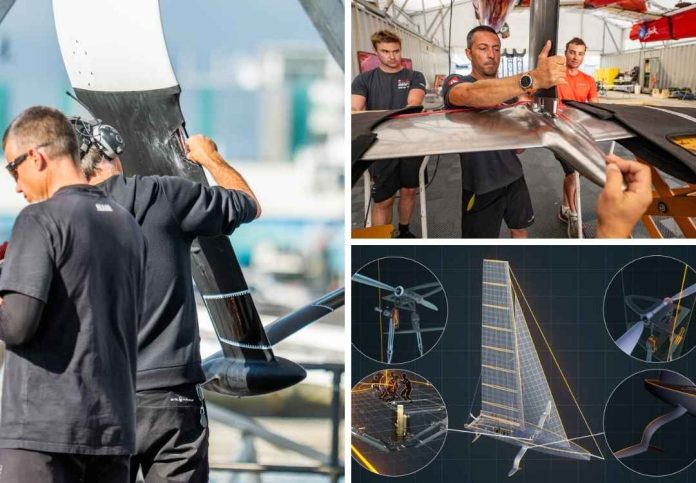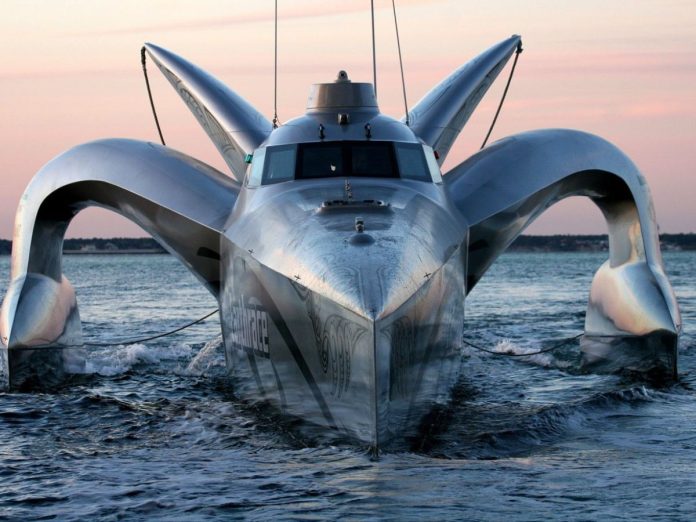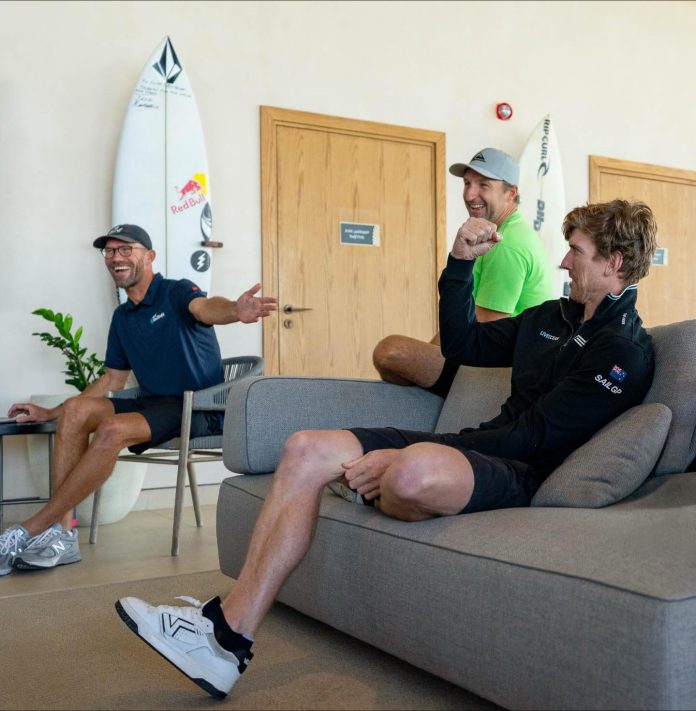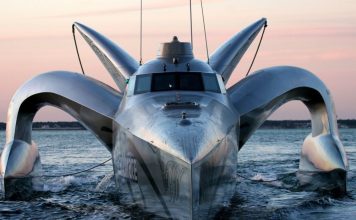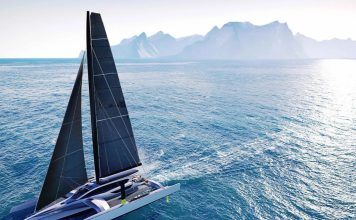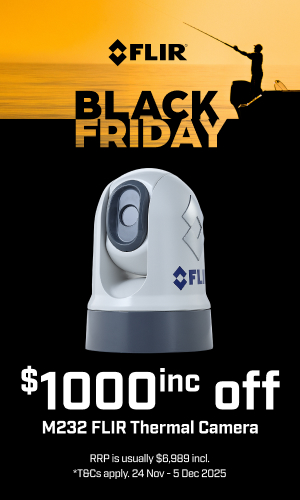What Are Hydrofoils?
Hydrofoils are wing-like structures mounted below the waterline of a boat. As a boat accelerates, these foils create lift, raising the hull out of the water and significantly reducing hydrodynamic drag. This allows the boat to achieve much higher speeds than it would otherwise. There are two main types of foils seen in these vessels: L-shaped foils and T-shaped foils.
AC75 Hydrofoil Design
The AC75, used in the America’s Cup, is a monohull that relies on advanced L-shaped hydrofoils for its performance. The foil arms, mounted on either side of the boat, cant downwards and extend into the water. The vertical section of the foil provides lateral resistance, which is crucial for countering the sideways force generated by the wind. The horizontal wing generates lift, allowing the AC75 to rise out of the water and foil at high speeds.
The AC75’s L-shaped foils are adjustable, allowing the team to fine-tune their angle and depth depending on wind and sea conditions. This adjustability gives the crew more control over lift and stability, especially in challenging conditions. The AC75 also features a T-shaped rudder foil at the stern, which functions similarly to an airplane’s tail fin, helping to stabilise the boat while it is foiling.
The AC75’s foil system is highly sophisticated, offering a blend of speed, control, and stability, which is critical for the intense, high-speed racing seen in the America’s Cup.
AC40 Hydrofoil Design
The AC40, a smaller version of the AC75, also features L-shaped hydrofoils, though they are simpler in design. The AC40 uses either single or dual foil configurations, with the dual setup providing greater stability. Like the AC75, these foils are adjustable, allowing the crew to balance lift and drag for optimal performance.
One of the key differences between the AC40 and the AC75 is the complexity of the foil system. While the AC40’s design is simpler, it is still highly effective, enabling this smaller yacht to foil and reach impressive speeds. The T-shaped rudder foil, similar to that of the AC75, plays a vital role in stabilising the boat during foiling.
While the AC40’s foil system may not be as complex as the AC75’s, it still offers significant control and performance benefits, especially for earlier rounds of America’s Cup racing and training.
F50 Hydrofoil Design
The F50, used in SailGP, is a catamaran—a multihull design that uses T-shaped foils on both its main foils and rudder. Unlike monohulls, catamarans have two hulls, which provide inherent lateral stability. This allows for the use of T-foils, which consist of a vertical strut and a horizontal wing resembling the letter “T.”
The T-shaped foils on the F50 provide lift across both hulls, allowing the catamaran to rise out of the water and significantly reduce drag. These foils are ideal for multihulls, where the boat’s stability comes from the two hulls rather than the foil design itself. The F50’s foils are also adjustable, enabling teams to fine-tune their lift, drag, and stability depending on the conditions.
Compared to the AC75 and AC40, the F50’s T-foils provide a more straightforward form of lift, but their use in a multihull setting offers superb lateral stability and high-speed performance.
Comparing L-Shaped and T-Shaped Foils
The AC40 and AC75 monohulls rely on L-shaped foils because they need to balance lift with lateral stability. The vertical component of the L-shaped foil provides resistance against the sideways force of the wind, while the horizontal wing generates lift. In contrast, the F50 catamaran uses T-foils because its two hulls provide the lateral stability needed, allowing the foils to focus primarily on lift.
While both systems are designed for maximum speed and efficiency, the monohull foils are more complex due to the additional stability requirements. The F50’s simpler T-foil system works effectively with its multihull design, making it less complex but still incredibly fast.
What’s Next for Hydrofoil Design?
As these boats push the limits of speed and technology, it’s clear that both L-shaped and T-shaped foils offer distinct advantages. However, as engineers continue to refine these designs, what innovations will shape the next generation of hydrofoiling yachts? Will we see new hybrid systems that combine the strengths of both types of foils, or perhaps entirely new approaches that redefine what’s possible on the water?








